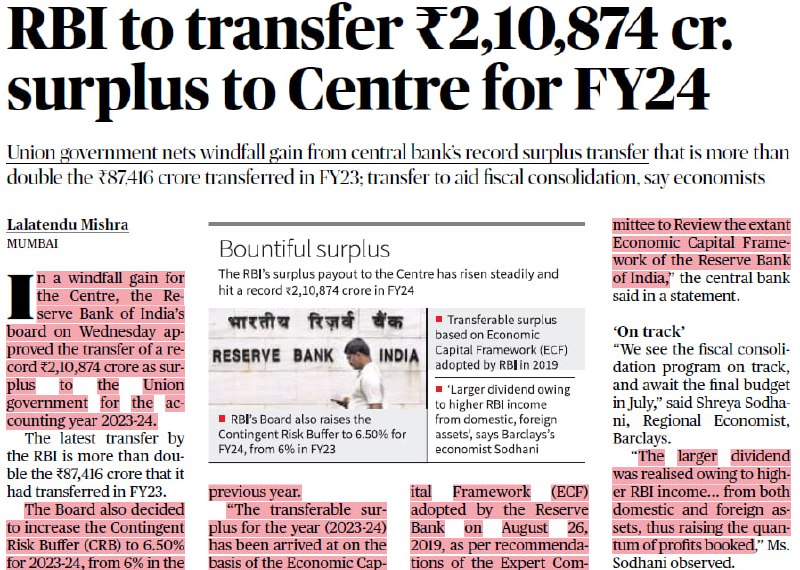2024-05-07 09:03:35
Relevant points of above article:
1. All GST anti-profiteering complaints are now dealt by the Competition Commission of India (CCI) from December 1, 2022. Prior, the National Anti-profiteering Authority (NAA) was set up in November, 2017 to check unfair profiteering activities by registered suppliers. And now the GST Appellate Tribunal (GSTAT) has also been operationalized.
2. Monthly GST Collections in April 2024 has crossed Rs. 2 lakh crore out of which SGST completely goes to States, IGST.... half goes to states and half to Centre and, out of CGST..... 41% goes to Stattes (as per Finance Commission)
3. Revenue Neutral (Tax) Rate in the context of implementing GST is basically that rate of GST at which the GST tax revenue will be equal to the tax revenue before implementing GST. This was suggested to be 15.3 per cent at the time of implementation of GST. But this Revenue Neutral Tax Rate has come down to 11.6 per cent that means now after implementing GST even at 11.6% of effective GST rate the tax revenue collection will be equal to what was the revenue collection at 15.3% at the time of implementation of GST. This is really good.
4. Tax Buoyancy has improved from 0.72 (before GST) to 1.22 right now. Even if we remove the compensation cess, GST Tax Revenue Buoyancy will be around 1.15. (Above 1 is considered as good).
5. Gross GST to Tax ratio has touched almost 7%. Overall Tax/GDP ratio of India is around 16%
6. GST is best example of Cooperative federalism as almost all the decisions happen through consensus.
16.0K viewsedited 06:03



